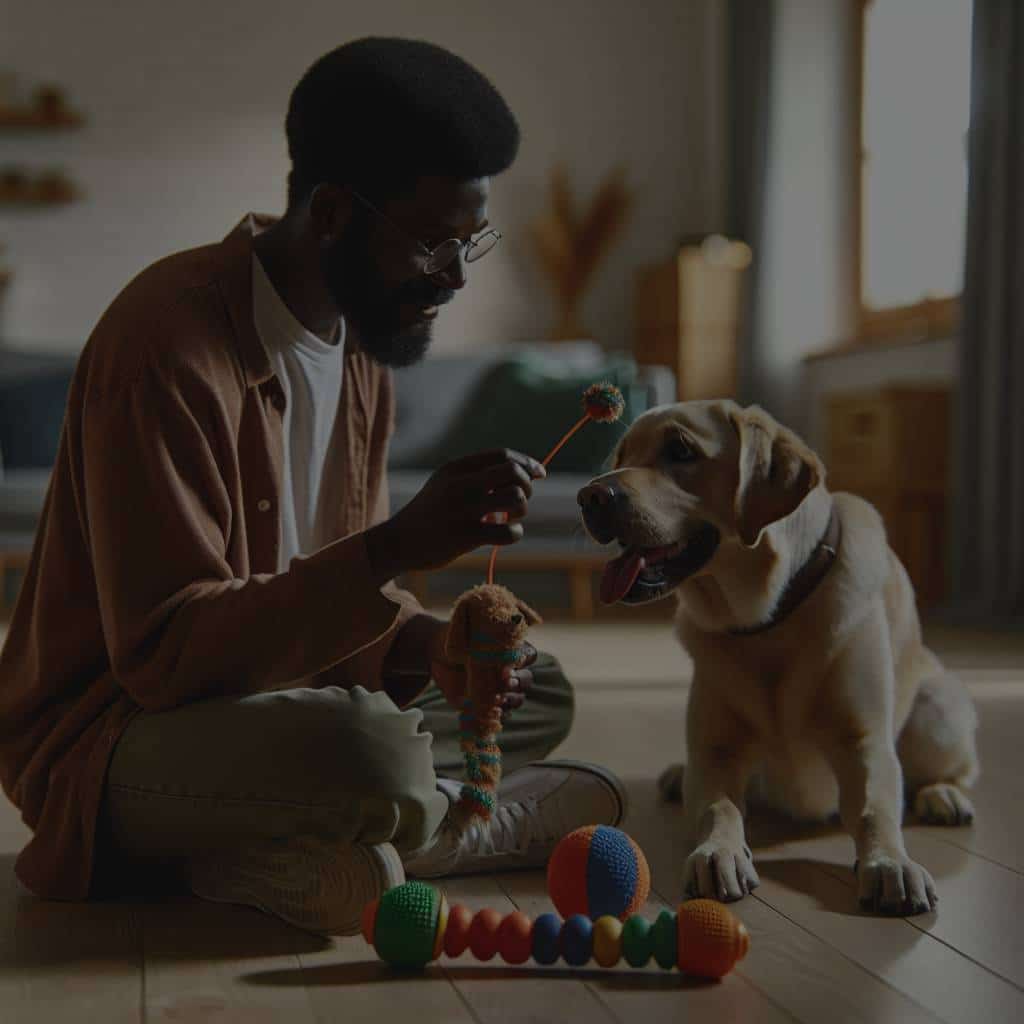Training a dog is a fulfilling experience that strengthens the bond between pet and owner. However, this task can present unique challenges when the dog in question has visual impairments. Suffering from a lack of vision doesn’t render a dog helpless, though. With the right training techniques, you can help your visually impaired pet navigate their world safely and confidently.
Understanding Visual Impairments in Dogs
Before we delve into the training techniques for visually-impaired dogs, it’s essential to understand what visual impairments in dogs entail. Visual impairment in dogs can range from conditions such as cataracts and glaucoma to complete blindness. These conditions can be congenital, meaning the dog was born with them, or they can develop over time due to aging, disease, or injury.
Also to see : How to Teach a Cat to Use a Cat Door Safely and Confidently?
Typically, dogs with vision loss rely more heavily on their other senses. Just like humans, dogs can adapt to their circumstances, making the most of their sense of smell, hearing, and touch. It’s this amazing resilience that will help your pet adapt to their situation and live a full and happy life.
Recognizing the Signs of Visual Impairments
It’s not always immediately obvious when a dog is experiencing vision loss. Sometimes, it’s a gradual process that can go unnoticed until the dog’s vision is significantly affected. Knowing what signs to look for can help you catch visual impairments early, providing more time to adapt and adjust your training methods.
In parallel : What Are the Best Strategies to Reduce Dander for Cat Owners with Allergies?
Some common signs of vision loss in dogs include bumping into furniture, difficulty finding toys or food bowls, or appearing disoriented in familiar environments. If you notice any of these signs, it’s important to consult with a veterinarian for a proper diagnosis.
Adapting Your Training Techniques
When training a dog with visual impairments, the key is to rely on their other senses. Traditional training methods may need to be adjusted to suit your pet’s needs.
Instead of relying on visual cues and hand signals, consider using voice commands and sound cues. These could be simple verbal cues or even clicker training, which uses a distinct sound to indicate when a behavior is correct.
Introducing different textures can also be useful. For example, switching the flooring type can help your pet understand they are entering a different area.
However, one of the most important training techniques for a visually impaired dog is consistency. Try not to rearrange furniture or other items around the house frequently, as this can confuse and disorient your pet.
Choosing the Right Breeds for Guide Dogs
Some dog breeds naturally excel as guide dogs, making them excellent companions for people with visual impairments. These breeds often have a strong drive to work, are easily trainable, and have good health and temperament.
Labrador Retrievers, Golden Retrievers, and German Shepherds are among the most commonly used breeds for guide dogs. These breeds are known for their intelligence, trainability, and dedication to their handlers.
However, it’s important to note that not all dogs of these breeds will make excellent guide dogs. The individual dog’s temperament, health, and willingness to work are just as important as their breed.
Incorporating Cats and Other Pets
If you already have other pets, such as cats, it’s important to keep the needs of your visually impaired dog in mind. Cats, being agile and unpredictable, can sometimes be a source of stress for a dog with vision loss.
Introducing scent markers can help your dog distinguish where the cat is. Also, ensure that the cat’s litter box and food are placed in areas your dog can avoid.
Remember, patience and consistency are key when training a dog with visual impairments. It may take more time and effort, but the reward of seeing your pet navigate their world with confidence is well worth it. With the right techniques, your dog will be able to live a fulfilling and comfortable life despite their visual impairments.
Assisting Your Dog in Daily Activities
Training a dog with visual impairments extends beyond teaching commands and tricks. Ensuring your blind dog can comfortably perform daily activities is equally important. These activities may include finding their way around the house, locating their food and water bowls, and even avoiding obstacles during walks.
To help your dog navigate indoors, avoid rearranging your furniture. Consistency in the placement of items allows your dog to map out their surroundings mentally. Regular routes for walks can also be beneficial, as your dog will familiarize themselves with specific routes over time.
Scent markers can be a useful tool for aiding in daily activities. Utilize different scents to mark important locations in your home, such as the location of the food and water bowls, their bed, and even the front door. Your dog’s heightened sense of smell will help them remember these scents and associate them with specific areas or items.
Toys with distinctive smells or that make noise can also be beneficial for playtime. Interactive toys that engage their other senses can help keep your dog stimulated and entertained, despite their lack of vision.
Training a Visually Impaired Dog to Be a Service Dog
Despite their visual impairments, some blind dogs can be trained as service dogs. While the lack of vision may disqualify them from becoming guide dogs, they can still provide valuable services. For example, they can be trained to alert their owners of specific sounds or events, such as a doorbell ringing or a smoke detector going off.
As with any service dog, training a visually impaired dog requires consistency, patience, and time. Working with professional dog trainers who have experience with visually impaired dogs can be beneficial in this process.
However, it’s essential to remember that not all blind dogs are suitable for service dog training. Factors such as the dog’s overall health, temperament and willingness to work should be considered before embarking on service dog training.
Conclusion
Training a dog with visual impairments undoubtedly presents unique challenges. However, with patience, understanding, and the right techniques, these special dogs can live full, happy lives.
Remember, blind dogs are just as capable and deserving of love and companionship as any other dog. They might require a bit more patience and consistency, but the bond you’ll form with your visually impaired pet is truly one-of-a-kind. Whether it’s through scent markers, texture differentiation, voice commands, or specialized training, there are many ways you can help your visually impaired dog navigate their world confidently and safely.
No matter the dog’s level of vision loss, embracing their other senses and acknowledging their resilience will not only enhance their quality of life but also strengthen your bond with them. Always consult with a veterinarian or a dog trainer experienced in dealing with visually impaired dogs to discuss the best strategies for your specific situation.






